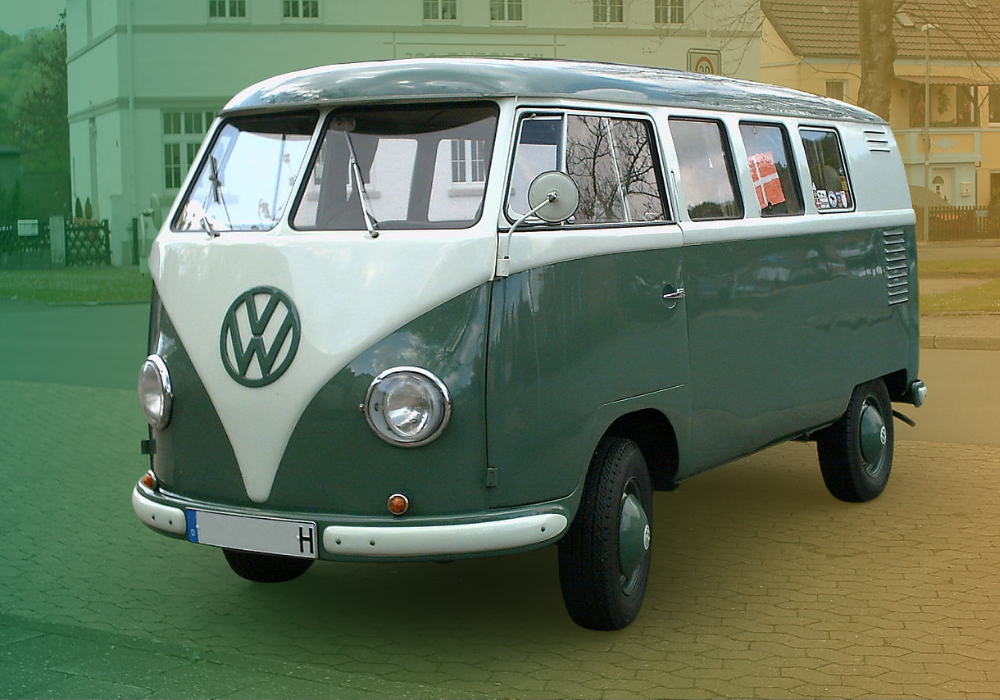1. The Origins Of The VW Camper
The idea for the VW campervan began in the late 1940s when Dutch importer Ben Pon sketched a simple van based on the Volkswagen Beetle chassis. His concept focused on creating a practical, spacious vehicle for transporting goods. Volkswagen took notice and developed the Type 2, also known as the Transporter, which debuted in 1950.
- By the 1960s, VW buses were so popular with hippies that dealerships jokingly referred to them as "hippie wagons".
- The T1 campervan could reach a top speed of just about 60 mph, making the journey part of the adventure.
- In Brazil, production of the T2 which had started in the 1960s, continued until 2013, 34 years after production had ended in Europe and the US and just 2 years before the release of the T6!
2. The First Generation: Type 2 T1 (1950–1967)
The first official VW campervan, the T1, featured the iconic split windshield and rounded body. With its rear-mounted air-cooled engine and spacious interior, it quickly became popular for commercial use and later adapted for recreational travel. Conversion companies like Westfalia transformed these vans into campers with pop-up roofs, fold-out beds, and compact kitchen units.
3. Flower Power Era: Cultural Icon of the 1960s
During the 1960s and 70s, the VW campervan became a symbol of the counterculture movement. Its affordability and DIY-friendly nature made it a favourite among travellers, surfers, and festival-goers. Bright colours, peace symbols, and personalized paint jobs turned these vans into mobile expressions of individuality and freedom.
4. Second Generation: Type 2 T2 (1967–1979)
The T2 introduced a more modern look with a single-piece windshield and improved engine performance. It offered more space and comfort, making it ideal for long journeys. The T2 continued the tradition of adventure, with many enthusiasts traveling across continents in their trusty vans.
5. Third Generation: Type 2 T3 (1979–1992)
The T3, also known as the Vanagon in the United States, featured a boxier design and more advanced technology. It offered water-cooled engines and improved handling. Camper versions remained popular, offering upgraded interiors and more reliable performance for road trips and outdoor adventures.
6. Modern Era: T4, T5, and Beyond
As Volkswagen continued to evolve its campervan line-up, models like the T4, T5 and T6 introduced front-mounted engines, more powerful drivetrains, and modern amenities. These vans catered to a new generation of explorers seeking comfort and technology without sacrificing the spirit of adventure.
7. Legacy and Revival
Today, vintage VW campervans are cherished collector’s items and still hit the road for festivals, road trips, and weekend getaways. Meanwhile, Volkswagen has revisited its roots with modern electric concepts like the ID. Buzz, blending nostalgia with sustainable innovation.
Final Thoughts
The enduring appeal of VW campervans lies in their versatility, charm, and the lifestyle they represent. More than just vehicles, they embody a sense of freedom, creativity, and connection to the open road.
Explore Our VW Campers









 Spidersnet
Spidersnet